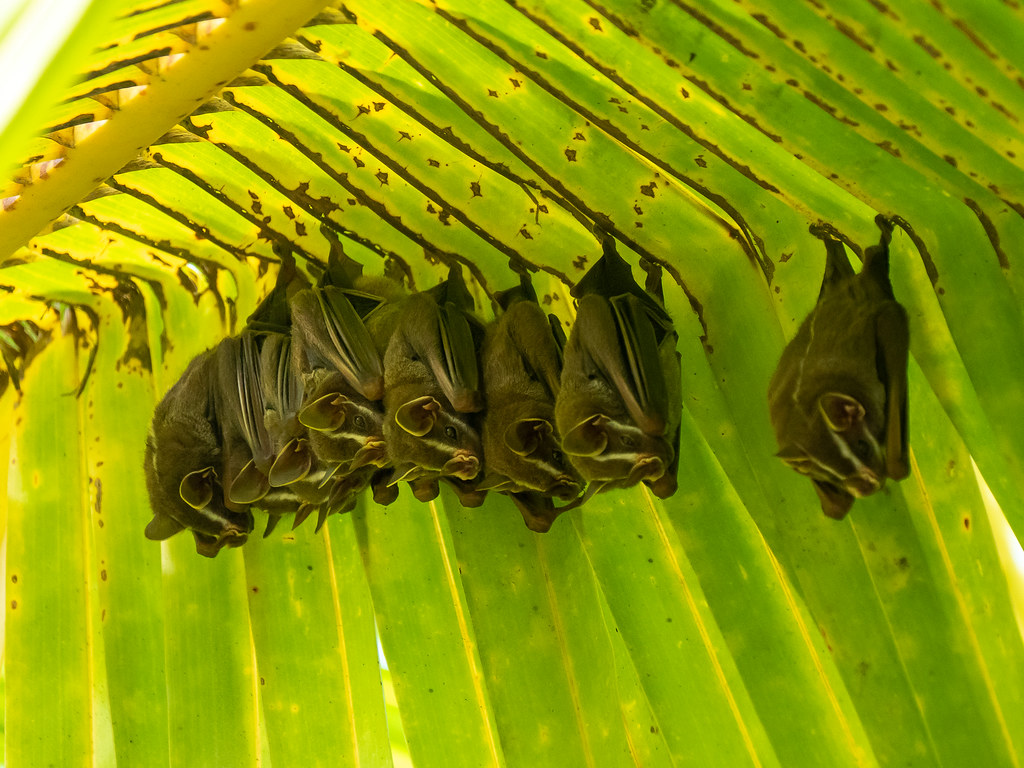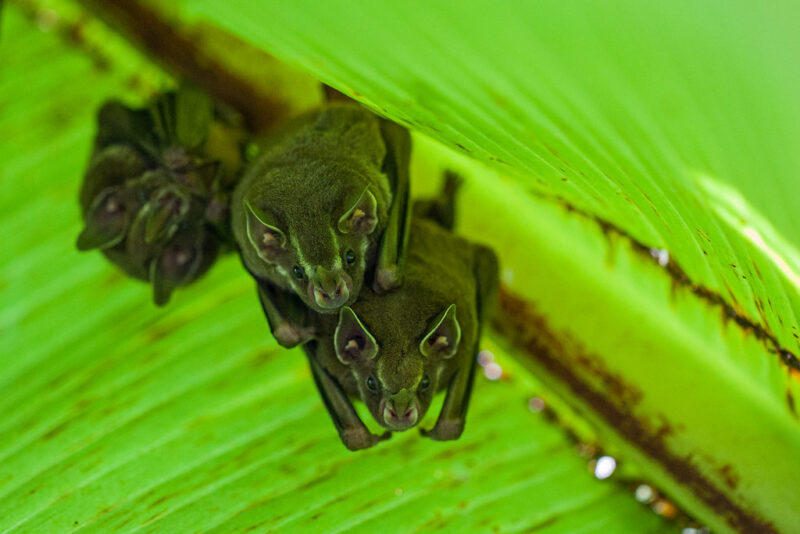The Fascinating Tent-Making Bats

Everybody knows that Costa Rica is a small country but it has a great biodiversity. Nowadays thanks to much research through the rainforest we know that there are around 240 mammal species and the interesting fact about this is that nearly half of them are bats. Biologists and other scientists have identified at least 117 species of bats; that number represents around 8% of the world’s bats.
These nocturnal animals are very misunderstood, there are several myths about them that have given them a bad reputation. For many people they could be as ugly as toads, but they have very important roles in the environment that provide ecological benefits for humans.
For instance insectivorous bats controlled the population of insects, deleting those that transmit diseases like Dengue, Malaria or Chikungunya. On the other hand, frugivorous bats are also important because they will be incharge of dispersion of seed from a lot of plants and trees. Therefore, they might be called “farmers” of the forest, because they contribute to the recovery of the ecosystem.
Moreover, there is another group of bats that are nectarivorous, it means that they feed on nectar of different flowers, so they help to several plants of the forest to reproduce when they deposit the pollen from one flower into other flower, here is when the magic of pollination occurs.

An interesting fact about these incredible creatures are the only mammals that can fly. Some other mammals can glide but they cannot produce lift. Most of them are mostly nocturnal, therefore during the day can be found sleeping upside down in a cave, in a cavity of a tree, or under the roof of other parts of the buildings.
However, in the tropical countries of America there are around 22 species of bats that evolve to become nice architects with some plants, due to the fact that they are able to modify the leaves. They use to shew around the main vein and midribs of the leaf, then it blends down, making a kind of “roof” to roost under it. So, for that reason, these kinds of bats are known as “tent roosting bats or tent-making bats”.
In addition, depending on the species, they will choose different types of plants as well as they will design a different kind of architecture on the leaf, but at least 77 species of plants can be utilized to make a tent. Among the most common include, Banana, Palms, Heliconias and Philodendrons that are related with Monsteras from Aracea family.
For example, Thoma’s Fruit-eating Bat (Dermanura watsoni) and Mesoamerican Tent-making bat (Uroderma convexum) are the bats that use most of the plants species, while Toltec fruit-eating bat (Artibeus toltecus) that occurs in higher elevations, Brown tent-making Bat (Uroderma magnirostrum) and the Andersen’s fruit-eating bat that is found in south america are known to use only one specie of plants as well as one type of tent architecture.
The architecture of the tents could be classified in eight categories, one is known only from the old world genus of bats Scotophilus. Next will mention the seven types of tents of these neotropical flying mammals.
Conical
Umbrella
Pinnate
Bifid
Paradox
Inverted boat
Boat / Apical
Why do bats use the plants as tents?

There are many reasons that could suggest why these mammals prefer to stay under the leaves during the day.
First of all, there is an abundance of plants in the tropical rainforest that grow in different kinds of habitats, therefore, the bats can find most of this resource in the environments instead of caves and natural cavities in the trees… Certainly, the tents provide a shelter for the bats and depending on the species sometimes they sleep in groups of several individuals. Therefore, when they are resting, they are able to keep their bodies warm thanks to the tent.
Also, during the day the tent works very well against the sunlight, so under the leaf will be darker and it will let them rest more comfortably. However, during the rainy days, these bats do not worry too much because they have a nice roof for the water.
Finally, these bats use the tents due to this is a good resource to be hide from some predators of the forest, but some other mammals like the Red-backed squirrel Monkey, already know how to recognize the tents of the Bats, so sometimes they use to ambush the bats jumping from the top of the branches in order beat them against the floor to take them over.
Link
Author: Yostin Rojas – NGCR Guide
